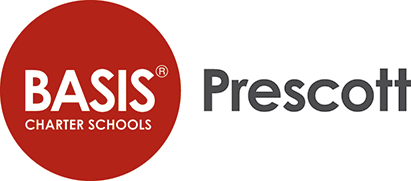WEEK 7: Reflective Reviews
Hello everyone!
Updates on the surveys: it has been very slow this past week. We got 4 surveys this week though! What I am going to do with the collected data is hopefully compressing it down into an excel spreadsheet and each participant are assigned by the number they filled out on the survey leaving out names and birthdates. I also have been messing with the spreadsheet and how I can concise the data into graphs and charts. A visual representation of the data would go into a home-made pamphlet! Fingers-crossed! My knowledge on technology only goes so far~
I have been reading a the Frontiers in Pharmacology: Recent Progresses in the Treatment of Osteoporosis 2021. They categorized the medications into two groups: Anti-resorptive drugs and Anabolic drugs. Anti-resorptive are the treatment of choice but because of adverse effects that comes with it, it has led to more developments towards Anabolic drugs. Anabolic drugs are more cost-effective and higher efficacy, but it also comes with adverse effects such as increased risk of cardiovascular events (stroke). Extra efforts have been made towards researching more into Wnt signaling pathways due to positive findings!
- Antiresorptive Drugs
- interfere normal functions of osteoclasts
- it increases the bone mineral density (BMD) but decreases flexibility of the bone which increases the risk atypical fractures
- not recommended for younger patients due to reduced flexibility
- rare adverse effects like osteonecrosis (the death of the bone tissue due to the lack of the blood supply) can come with the treatment
- Estrogen Replacement Therapy
- suppresses osteoblasts apoptosis
- adverse effects: heart issues, breast cancer, and venous thromboembolism
- Raloxifene/Bazedoxifene (Selective estrogen receptor modulators)
- It plays around with the agonist and antagonist effects on Estrogen receptors (promoting vs stopping)
- interesting aftermath: reduces breast cancer but lower efficacy compared to the Estrogen Replacement Therapy
- Denosumab (RANKL inhibitor)
- Blocking RANKL-RANK interaction by neutralizing RANKL to inhibit bone resorption
- adverse effects: risk of infections, femoral atypical fractures, and osteonecrosis
- stopping the use of Denosumab can cause BMD to rapidly decrease
- Estrogen Replacement Therapy
- Antiresorptive Drugs Under Development
- Cathepin K (CatK)
- CatK is secreted by mature osteoclasts (OCs) to degrade Col-I and other matrix proteins
- inhibiting CatK decreases OCs bone resorption and increases bone formation
- Odanacatib (a selective Cat K inhibitor) can increase BMD
- Side Effects:
- stroke
- CatK deficiency (disrupts blood to brain barrier and causes neurological deficits and neuron apoptosis)
- Chloride-channel 7 (ClC-7) and CatK coexists and work together at the borders of OCs so damage to ClC-7 results in severe Osteoporosis due to the inability to acidify the sealing zone
- further development has stopped due to neurological deficits
- Integrin avB3
- it mediates OCs onto bone matrix proteins –> inhibiting the integrin can hypothetically prevent bone resorption (results were shown in rats)
- only a few preclinical studies in animals, not enough to show promising data
- Cathepin K (CatK)
- Anabolic Drugs
- Teriparatide (recombinant human PTH 1-34)
- helps with the bone formation and promotes osteoblasts (OBs) functions
- better efficacy than risedronate regarding vertebral and non-vertebral fractures
- recommended that it should be limited to 24 months
- Abaloparatide (synthetic analogue of pTHrP)
- reduces fracture risk in vertebral and non-vertebral
- higher efficacy in BMD and lower incidence of hypercalcemia (too much calcium) than Teriparatide
- Superior over Teriparatide and Alendronate
- higher affinity to PTHIR and able to stimulate osteogenesis (formation of bones)
- Controversy: researchers aren’t sure if the positive results are from the decreased bone resorption or actual increase in bone formation
- Teriparatide (recombinant human PTH 1-34)
- Wnt Signaling –> Bone Anabolism
- Wnt signaling pathway enhances bone anabolism by reducing OBs differentiation, suppressing osteoclastogenesis and preventing adipogenesis
- expression of Wnt target genes induces OBs lineage (aka promoting bone formation)
- Activation of Wnt pathway increases glycolysis in OBs so more energy for collagen synthesis and matrix mineralization
- Wnt inhibits bone resorption by increases OPG production
- Drugs related to Wnt
- Romsozumab (humanized antibody neutralizes sclerotin)
- induces bone formation in first 2 months of using the treatment and sustained suppression of bone resorption up to 12 months
- sustainable BMD gains can be achieved by sequential therapy with Romsozumab and Denosumab
- it is superior over Teraparatide
- not recommended to patients with previous history of myocardial infraction and cardiovascular events
- sclerotin expressed in aortic vascular system, systemic blockade of sclerotin affects the remodeling process in the cardiovascular system
- Blosozumab (mAb against sclerotin)
- no clinical trials have been used to compare BMD between Blosozumab and Romsozumab
- more research is needed
- AbD09097 (new anti-sclerotin agent)
- more research is needed
- Lithium (GSK3B inhibitor)
- activates the Wnt B- catenin pathway
- data shown in mice treated with LiCl have lower fracture risk, stimulates the bone formation, and does not affect the bone resorption
- LiCl can be toxic at higher doses but it can also promote bone growth in lower doses… the question is how much is too much to be toxic? Should we be accounting for how long it stays in the body and accumulates over time?
- the data lacks bone specificity and potential off-target effects has now stopped further development
- Romsozumab (humanized antibody neutralizes sclerotin)
Those are my take-aways from the review! There are more to dive into as of categorization, guidelines, and cost-effectiveness of each treatment. I will continue to look into guidelines and going more in-depth with the treatments next week! See you soon~
